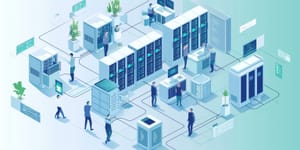In the past few years, we've witnessed datacenters across every industry undergo significant transformations influenced by the rapid evolution of artificial intelligence (AI), the deceleration of Moore's Law, and pressing global sustainability concerns. As we venture into 2024, these factors are increasingly shaping the industry's trajectory and forcing businesses to rethink their data center strategies going forward.
AI's Growing Influence on Datacenter Operations
The significant shift in the datacenter industry, driven by the expanding influence of AI, is transforming operations and infrastructure design. This evolution is most evident in the massive deployment of GPU clusters, a direct response to the growing demand for AI and machine learning capabilities. Cloud providers and hyperscale operators, grappling with the escalating need for AI processing power, have rapidly increased their reliance on these advanced processors. For instance, NVIDIA's H100 units saw remarkable shipment numbers, reaching 710,000 in 2023, with projections to ship up to 2 million chips by the end of 2024.
However, integrating these high-powered GPUs into datacenters is not without its challenges, especially in power and thermal management. The power requirements of NVIDIA's H100 and upcoming H200 chips, which NVIDIA reports it's Max TDP is up to 700 watts each, represents a significant increase over traditional dual-socket server setups. To address the heat generated by these components, datacenters are turning to innovative cooling strategies, with liquid cooling becoming increasingly prevalent. This method, which uses a liquid coolant to efficiently absorb and dissipate heat, is particularly effective for high-density GPU configurations.
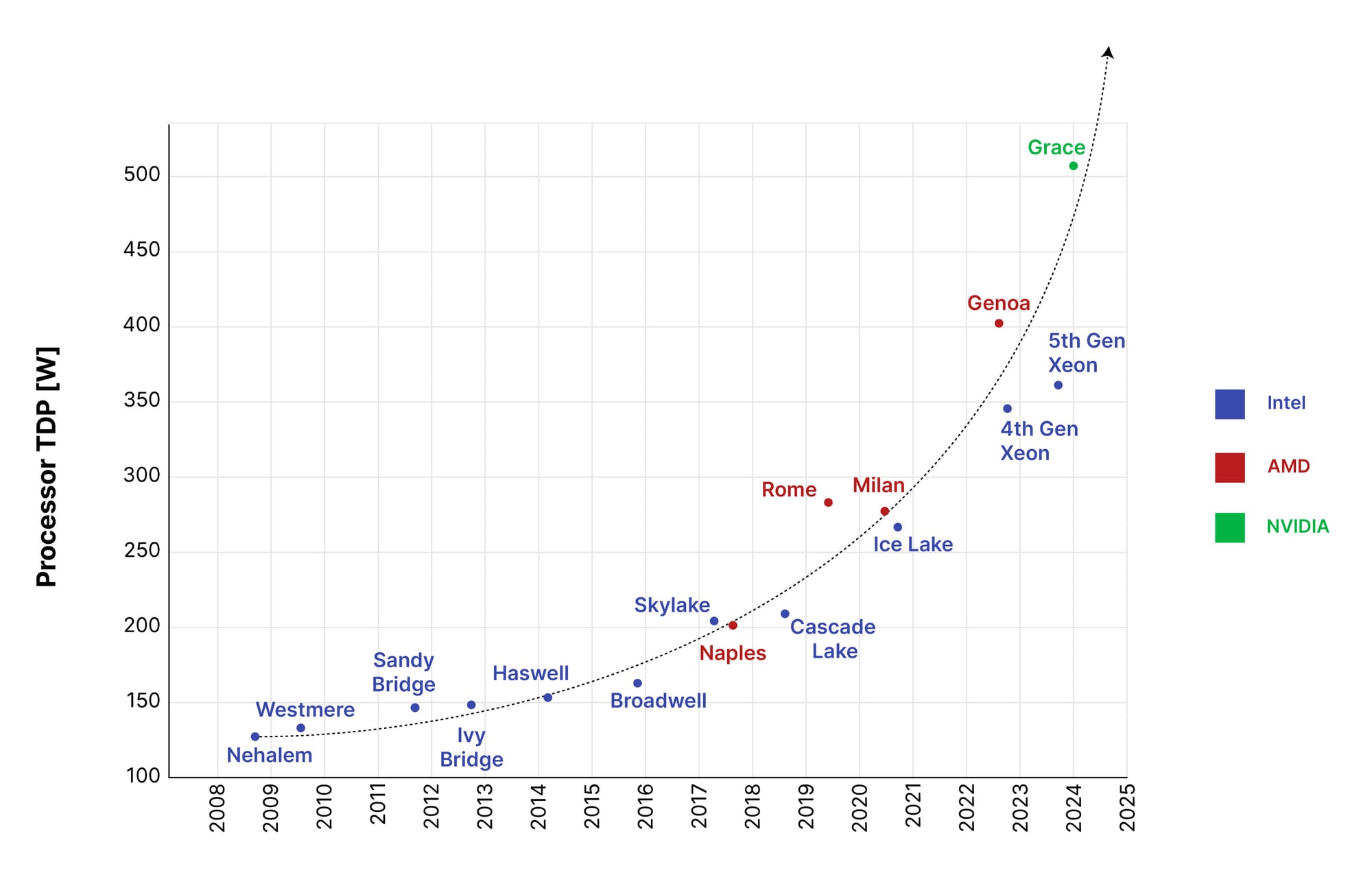
Moreover, the surge in power demand necessitates a reevaluation of power management techniques. Datacenters are now implementing more sophisticated power distribution and monitoring systems, utilizing efficient power supplies, and deploying smart energy management systems to optimize power usage effectiveness (PUE).
Evolving Infrastructure Design
The infrastructure design of datacenters is also evolving to accommodate these high-power AI processors. New facilities are being planned with enhanced power capacity per rack and more robust cooling infrastructures, ensuring that they can sustain the intense power and cooling requirements of AI hardware while maintaining efficiency and reliability.
Sustainability remains a key concern in this evolving landscape. With the increased power and cooling demands, datacenter operators are seeking ways to balance the high energy requirements of AI workloads with environmental sustainability. Efforts include exploring renewable energy sources, implementing energy-efficient cooling technologies, and optimizing the overall design of datacenters for minimal environmental impact.
Looking forward, as AI technology continues to advance, the demand for even more powerful processing units is expected to rise. Datacenters must stay ahead of these developments, continuously innovating in cooling, power management, and design to meet the growing demands of AI workloads, all while maintaining a commitment to sustainability and efficiency.
Sustainable and Efficient Cooling Solutions
As the datacenter industry confronts the challenges posed by the increasing power and thermal demands of advanced AI-driven hardware, one critical response is the adoption of Advanced Liquid Cooling technologies. Recognized for its superior efficiency over traditional air cooling methods, Liquid cooling is poised for widespread adoption in 2024. This technology offers significant improvements in thermal management and has the potential to reduce overall system power consumption.
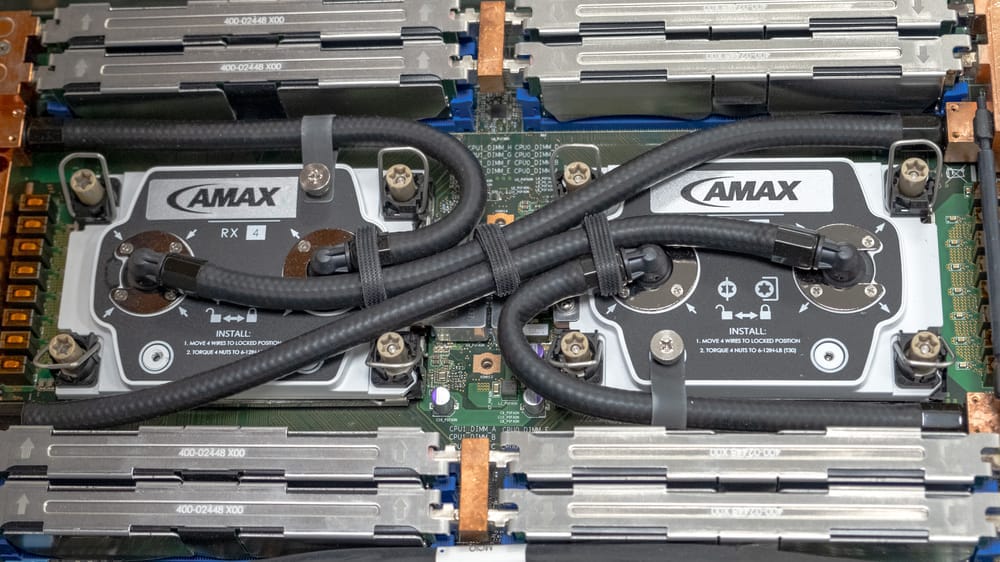
Direct Liquid Cooling (DLC)
One of the prevailing methods in 2024 is Direct Liquid Cooling (DLC), DLC works by using a liquid coolant to directly absorb heat from datacenter components such as CPUs and GPUs. This method is more effective than air cooling, as liquid is a better conductor of heat. The implementation of DLC, however, varies in complexity and efficiency depending on the specific needs and infrastructure of a datacenter. By lowering the coolant's temperature, these systems can enhance the performance of CPUs and accelerators, allowing them to operate at higher frequencies and wattages for extended periods. This can lead to significant improvements in computational performance and efficiency.
However, the use of DLC systems comes with its own set of considerations. While they provide significant performance benefits, establishing the necessary infrastructure for liquid cooling can be a substantial undertaking. Balancing the improved performance against the potential increase in energy consumption is a crucial aspect for operators to consider while adopting DLC.
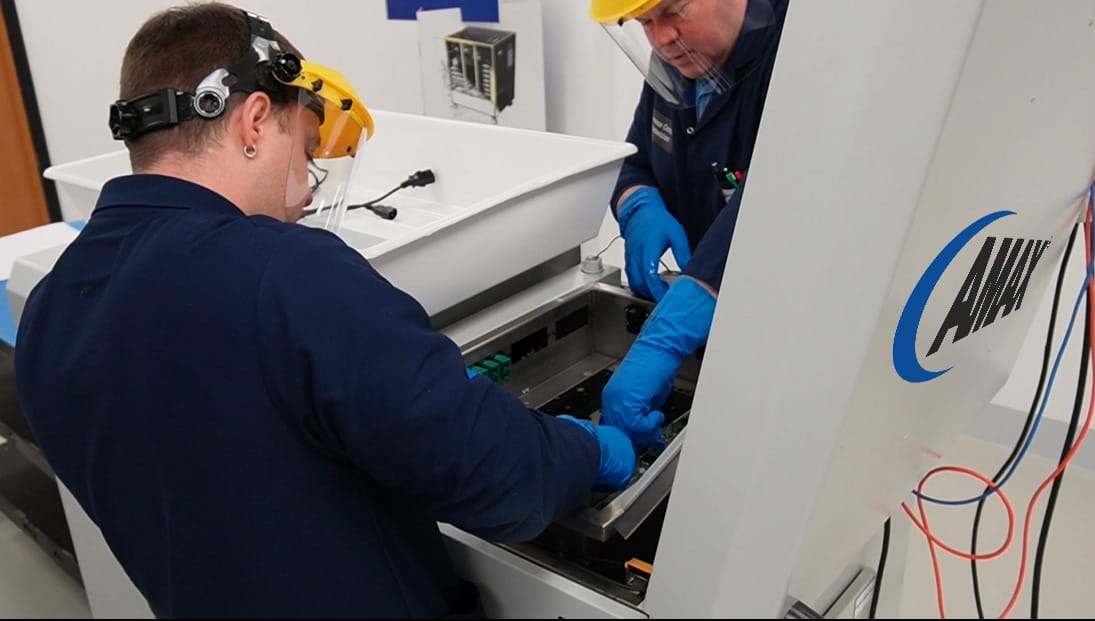
Immersion Cooling
In addition to traditional DLC systems, immersion cooling is emerging as a burgeoning option in the datacenter industry. Immersion cooling involves submerging datacenter components or entire servers in a non-conductive liquid. This method can provide more uniform cooling, reduce noise and physical space requirements, and has been shown to further decrease the risk of hardware overheating. The immersive approach is gaining traction, especially in facilities that host high-density computing hardware, where traditional cooling methods are becoming insufficient.
Moreover, immersion cooling aligns well with sustainability goals. By eliminating the need for air conditioning and fans, it can significantly reduce energy consumption compared to air-cooled systems. This makes it an attractive option for datacenters looking to improve their environmental footprint while managing the thermal demands of increasingly powerful computing systems.
Regulatory Pressures and Sustainability Goals
Datacenter operators today find themselves at a critical juncture, where the drive for sustainability intersects with increasing regulatory pressures. Governments around the world are intensifying their focus on environmental impact, demanding greater transparency and accountability from industries, particularly in terms of energy consumption and carbon footprint. This heightened regulatory environment is significantly influencing the datacenter sector.
Key regulatory frameworks, such as the European Union’s Energy Efficiency Directive and California’s Climate Corporate Data Accountability Act (CCDA), are prime examples of this trend. These directives mandate detailed reporting on energy usage and carbon emissions, compelling datacenter operators to closely monitor and disclose their environmental impact.

Energy Efficiency Directive
The EU’s Energy Efficiency Directive, for instance, sets forth stringent guidelines for energy consumption, encouraging the adoption of more efficient and renewable energy sources. It requires datacenter operators to measure and report their energy usage patterns, pushing them towards adopting more energy-efficient technologies and practices.
Climate Corporate Data Accountability Act
Similarly, California's Climate Corporate Data Accountability Act goes a step further by integrating climate-related risks into the reporting requirements. This act reflects a comprehensive approach to environmental responsibility, considering not only the direct emissions and energy consumption of datacenters but also their broader impact on climate change.
While these regulations present challenges, they also drive innovation and progress towards more sustainable practices within the industry. Datacenter operators are increasingly exploring and investing in green technologies, such as renewable energy sources, advanced cooling mechanisms like Direct Liquid Cooling (DLC), and energy-efficient server designs. These efforts not only comply with regulatory demands but also resonate with a growing consumer and corporate emphasis on sustainability.
Furthermore, the push for sustainability is fostering new partnerships and collaborations within the industry. Datacenter operators, technology providers, and regulatory bodies are working together more closely to develop standards and practices that align with environmental goals. This collaborative approach is leading to advancements in green computing and sustainable infrastructure design.
The Rise of Smart Datacenters
The datacenter industry is experiencing a significant shift towards more intelligent management practices. As the sector grapples with increasing regulatory pressures and the need for greater efficiency, the role of advanced automation and AI-driven analytics has become indispensable. These technologies are not just enhancements but essential tools for ensuring efficient operation and meeting compliance demands set by regulatory bodies.
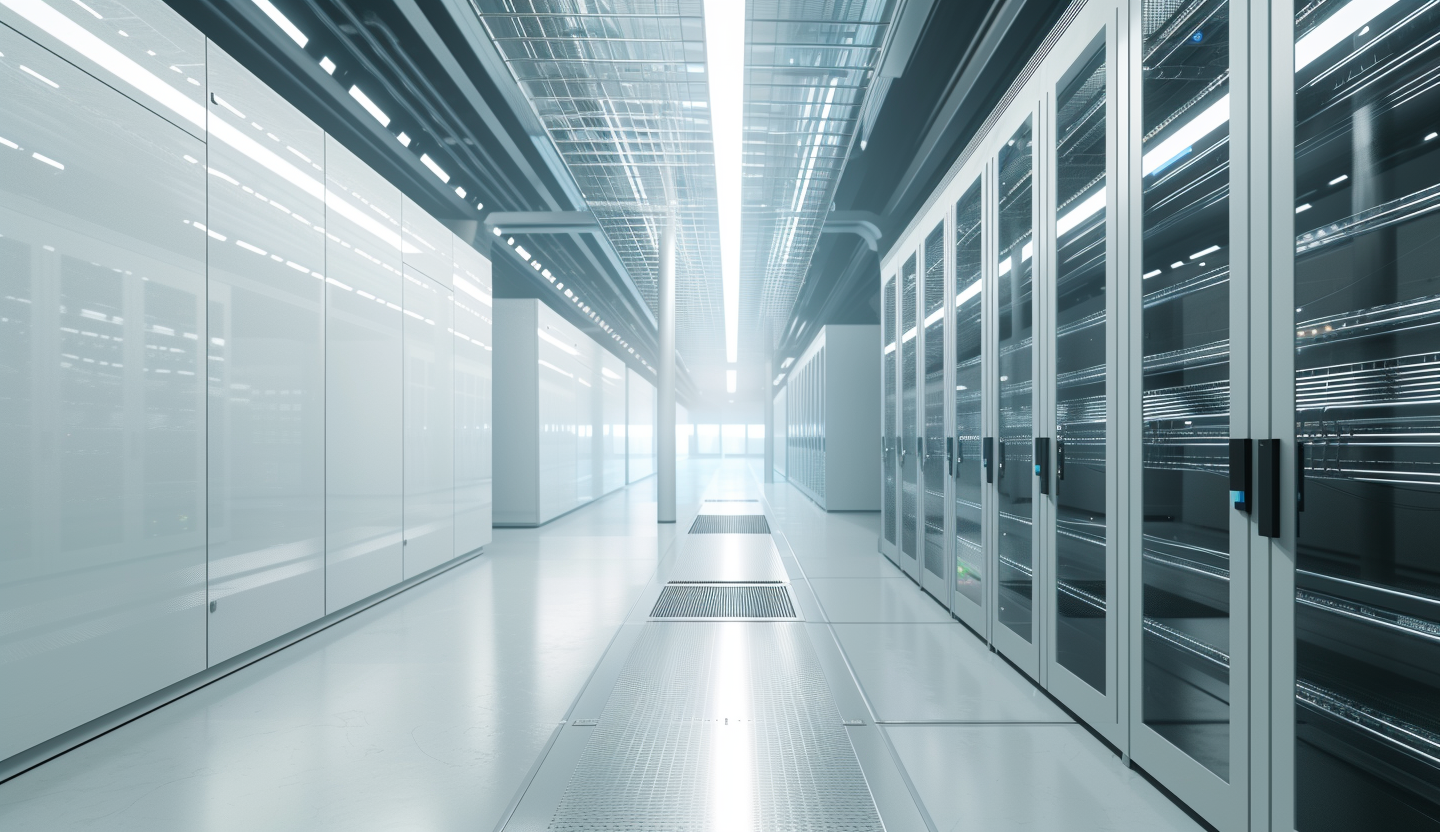
Advanced automation in datacenters involves using sophisticated algorithms and machine learning techniques to manage and optimize various aspects of operations, from cooling systems to power distribution. This level of automation enables datacenters to operate more efficiently by dynamically adjusting resource use based on real-time data, leading to significant energy savings and reduced operational costs.
Retrieval Augmented Generation (RAG)
One of the most promising AI tools for smart data centers is incorporating Retrieval Augmented Generation (RAG) into business operations. When operated in on-premises environments, RAG significantly boosts AI analytics and automation while ensuring data security and confidentiality. By integrating advanced information retrieval with language processing, RAG enriches systems with both internal and external data. This capability is vital across various sectors for functions like predictive maintenance, energy optimization, and meeting regulatory compliance. Implementing RAG can lead to substantial improvements in operational efficiency and adaptability, making it a valuable asset for businesses looking to leverage AI for smarter, more responsive operations.
AI-driven analytics, on the other hand, provides deep insights into the performance and health of datacenter infrastructure. By analyzing large volumes of data from various sensors and systems, AI can predict potential issues before they escalate into major problems, enhancing the reliability and uptime of datacenter services. This predictive capability is crucial for maintaining the high levels of performance and availability that are critical in today's data-driven world.
Datacenter Infrastructure Management (DCIM)
However, despite these advancements, there is a growing recognition that current datacenter infrastructure management (DCIM) software may not be fully equipped to leverage these new technologies to their fullest potential. Many existing DCIM solutions offer limited analytics and automation capabilities, which can hinder a datacenter's ability to adapt to the rapidly changing technological landscape.
This gap in the market presents an opportunity for innovative startups to lead the transformation in datacenter management. These new players are likely to bring fresh perspectives and cutting-edge solutions that can more effectively integrate AI and advanced automation into datacenter operations. By doing so, they can help datacenters not only improve their operational efficiency but also ensure they are well-positioned to meet both current and future regulatory requirements.
Hyperscale Campuses
The emergence of hyperscale campuses is another notable trend, one that resonates strongly with AMAX. These sprawling facilities, often positioned near sources of clean energy, are reshaping the datacenter landscape to meet intensive compute demands, particularly those driven by AI advancements. Their strategic locations not only align with the industry's commitment to sustainability but also ensure efficient and cost-effective power supply, a key consideration in the design and operation of modern datacenters.
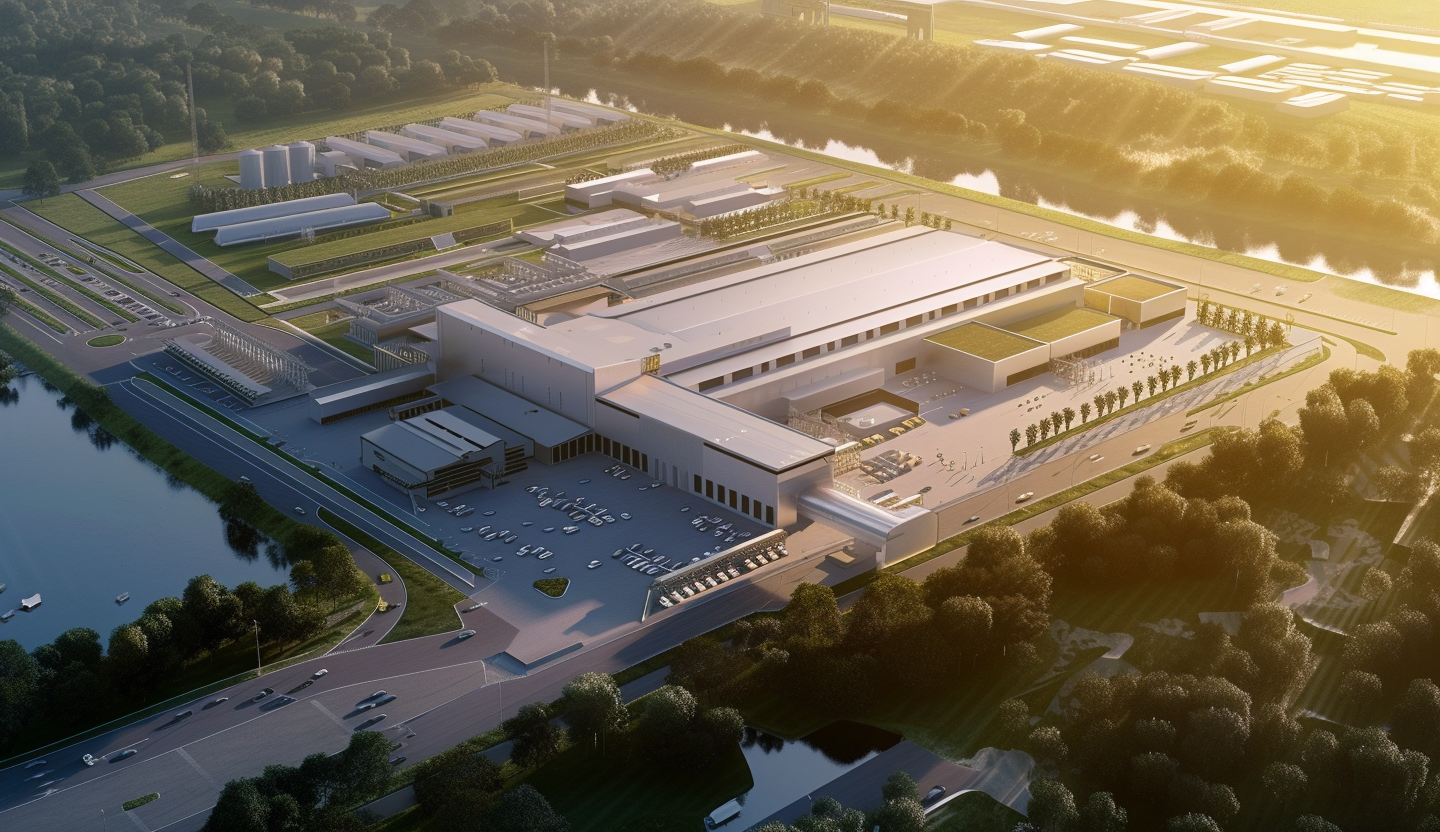
Hyperscale campuses are defining the future of datacenter architecture with their immense scale and enhanced efficiency. They are adept at managing vast data volumes, supporting critical operations like cloud computing, big data analytics, and machine learning — areas that are closely aligned with AMAX's expertise in IT infrastructure solutions. The focus on AI is especially pertinent, given the intensive computational power required by these technologies. By centralizing resources in these large-scale facilities, hyperscale datacenters can more effectively address these computational needs, offering scalability and high-performance capabilities.
Future-Ready Datacenters
Looking forward, the trajectory of datacenters points towards continued growth in both size and complexity. This evolution is driven by the escalating demands of AI, the pursuit of sustainability, and rapid technological advancements — all areas where AMAX plays a pivotal role.
The integration of advanced technologies such as AI-driven analytics, innovative cooling systems like Direct Liquid Cooling, and the utilization of renewable energy sources will become increasingly important for datacenters. These elements are essential not only for handling the expanding data processing needs but also for achieving energy efficiency and minimizing environmental impact.
In this dynamic environment, AMAX's ability to innovate and adapt is key. With a focus on engineering transformative computing solutions, AMAX is well-positioned to meet the challenges of this rapidly changing industry. The future of datacenters lies in large, technologically sophisticated facilities capable of addressing the growing demands of AI and cloud computing, while adhering to strict sustainability goals — a vision that aligns seamlessly with AMAX's mission and expertise in delivering cutting-edge IT infrastructure solutions.

